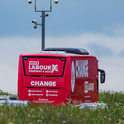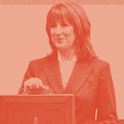History is on the retreat in our schools and our culture more generally. When, as education minster in Margaret Thatcher's government, I established the national curriculum in the 1980s, history was taken by all pupils up to the age of 16. This was later reduced to 14. The only other country in Europe that allows this is Albania.
We need to interest all our young people in our past—not just those who attend independent or grammar schools, or academies. And as a result of the immigration of the last 50 years, we are now home to people from more than 100 countries, attracted by Britain's way of life but with little knowledge of how it came to be. It is from this knowledge that affection, trust, tolerance, loyalty and cohesion must emerge.
A museum of British history cannot on its own roll back the anti-historical tide. But it can help in a small way, and fortunately it is back on the agenda. In the mid-1990s, with the support of former Labour ministers Roy Jenkins and Denis Healey, I tried to establish such a museum in London. We were top of the list for a £50m grant from the Millennium Commission and were encouraged by ministers to locate it at Bart's hospital in east London, as it was scheduled to close. An architect was appointed and a team of historians assembled. But when Tony Blair came to power in 1997, his lack of interest meant that our prospect of a grant disappeared. Gordon Brown is, however, interested both in history and in Britishness and is on record as welcoming the idea, so there is now reason for hope.
The museum should tell the whole story sequentially—from the Romans up to today—as no other museum in the country does. It would show, for example, how our rights and freedoms have developed from Magna Carta, and recreate the debates between Cromwell and the Levellers on democracy, Pitt and Fox on war and peace, Gladstone and Disraeli on empire, Asquith and the suffragettes on women's rights, Bevan and Macleod on the NHS, and Thatcher and Kinnock on Europe.
It should also pull together all the strands of our inventiveness, from the discovery of the circulation of blood, inoculation, penicillin and DNA to television, the jet engine and the internet. And, of course, showcase our cultural heritage—paintings, architecture, poetry, plays, novels and music from Purcell to the Rolling Stones. And it should show the way that Scotland, Wales, Northern Ireland and England have all contributed to making ours one of the most influential countries in the world.
If every child in the country visits this museum at least twice during their schooldays, even if history is not one of their subjects of study, they will take away some memory and understanding of how Britain has been fashioned over the centuries.
London's mayor, Boris Johnson, is very enthusiastic about the idea, but will need support from the government and the private sector. There are three possible sites for it. First, the 500,000 sq ft of unused space below the now disused Euro Terminus at Waterloo station. Second, a site between King's Cross and St Pancras which would be close to the University of the Arts, and could also host much-needed student accommodation, helping to make the area a "North Bank" of cultural activities. Another possible site would be near the Olympic development in east London.
It would be expensive, but it would attract sizable private sector support, even in these difficult times: school visits alone could guarantee attendance of over 1m a year. The government could make it part of the Olympics' cultural heritage—after all Birmingham City Council has just decided to rebuild its library at a cost of £193m.
There are museums of German and of American history in Berlin and Washington, and President Sarkozy intends to put one right in the middle of Paris to "re-inforce French identity." With everything else turning to dust, here at least is something that Gordon Brown could point to as a lasting memorial to his premiership.











